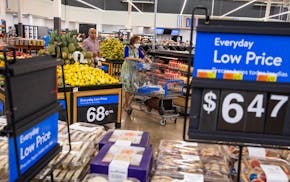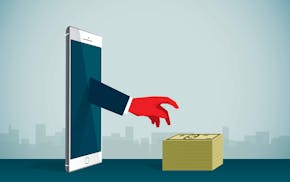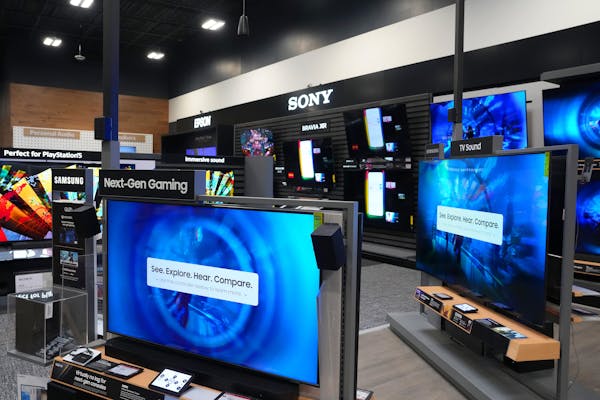Best Buy has survived the rise and fall of VHS tapes and DVDs. It has witnessed the advent of digital music streaming, causing a near death of CDs, to emerge as the sole U.S. brick-and-mortar consumer electronics chain left.
Now, as it continues to battle the rise of competitors, the residual effects of the pandemic and lower demand for electronics, Best Buy has reached a pivotal year. How the Richfield retailer responds will likely determine the trajectory of the company for years to come.
"By its nature, this is a business that changes all the time," said Best Buy CEO Corie Barry in an interview with the Star Tribune. "If you would have gone in our stores 20 years ago, you might have seen VCRs and a lovely stack of movies and a bunch of music and that isn't what you see when you walk in the stores anymore."
The Richfield-based company is ready for the next round, she and other executives say. It's a leaner organization, with 20% fewer workers and fewer stores, adding flexibility to respond to continually changing conditions. It has added product lines trying to create a new mix as electronics sales continue to be tepid and pandemic-quickened retail changes evolve more.
The next report card will come out Aug. 29, when Best Buy gives its financial report for May through July, a quarter that could give an early indication of back-to-school sales. Executives including Barry could not speak to future forecasts because the company is in the earnings quiet period, but the company has estimated sales could drop 6% to 8% because of cooling electronics sales.
What's clear is Best Buy can't afford to rest, said Neil Saunders, managing director and retail analyst at GlobalData Retail, who thinks Best Buy needs to make even more changes. Its stores, for example, are still too big and could continue to suffer from low foot traffic.
"If they don't make the right steps now it could imperil the future of the business down the road," Saunders said.
And it's too soon to know exactly what will work since many changes are still in pilot phases.
Adapting has meant downsizing and reimagining. Best Buy closed about 70 large-format stores — or 7% of locations — over the past three years with plans to shutter 20 to 30 more of its larger stores this fiscal year. The closures are unlikely to stop there.
Over time, Barry said, there might be more locations — with different purposes. But overall, the company would still have less square footage of sales space.
Some of Best Buy's newest model stores are centered on ways customers can interact and test products. Others are outlets focused on discount prices. Additional full-service stores are reducing their sales floors to make order pick-up smoother.
"It's more convenient, more easy, and that's a very different footprint than we have today," she said.
Stores are a crucial part of Best Buy's strategy. About 40% of online sales are picked up from stores, and another 20% of orders ship to customers' homes from stores.
The idea is to give the customers what they want at any given time, whether they need one-on-one help or just want to pick up a phone from a locker at midnight because that's the time window they have, Barry said.
That kind of experimentation is crucial to a pivot back to growth, analysts said.
Anthony Chukumba, an analyst at Chicago-based Loop Capital Markets, said Best Buy will need to continue to power through with new ideas. He will be looking for sales improvement from earlier this year, when sales were down 10% year over year.
"We have to constantly be thinking how we evolve our business regardless of whether sales are going up or going down," Chukumba said.
Rightsizing is a tricky bet
The key is reduction without cutting back too much.
It doesn't make sense for Best Buy to have as many stores as it did in the past, Chukumba said. Digital sales at Best Buy are now about a third of its domestic revenue and twice as high as before the pandemic.
However, he added: "You don't want to cut your store base too much because particularly the beauty of the model is that you do have these stores where you can touch and feel these products."
If anything, Best Buy needs to be more creative with the displays within their stores to give people a reason to visit, Saunders said.
Augmented reality and virtual reality will continue to be evolving fields people will need to see to believe. Apple recently announced its new Apple Vision Pro mixed-reality headset would only be sold in Apple stores. Best Buy needs to have more interesting in-person experiences like Apple to bring people into stores and differentiate it from general merchandise stores like Walmart, Saunders said.
"I think Best Buy needs to sort of provide that guidance and inspiration in stores a bit more," he said.
Reduction in force as Best Buy changes store footprints go hand in hand but can also be tricky. Too many cuts can affect customer service.
"There's still a huge need for in-store service as a way to differentiate from online-only competitors," said Mike Baker, a senior retail analyst with D.A. Davidson Cos.
Over the past three years, Best Buy's overall headcount has declined by about 25,000 people. Most of the reduction has come from attrition, but there also were layoffs. In February 2021, Best Buy made headlines when it announced it laid off 5,000 full-time employees and added about 2,000 part-time positions that month. As recent as this spring, Best Buy laid off hundreds of workers in a week.
Barry said Best Buy's workforce is becoming more flexible as employees are being trained to work across departments and stores, and it has improved store customer service scores.
"This isn't just about I think what gets often characterized as cost-cutting, this is about a workforce that is more trained, more developed and can work across all those different areas ... everything from delivery and installation all the way to an expert computing experience," Barry said.
Changing the product mix
Plus, Best Buy is expanding into new product categories and services outside of its traditional offerings including taking large steps into the connected health care space.
In recent years, Best Buy grew its lineup of e-bikes and other electric transportation and also purchased St. Louis Park-based Yardbird, adding to its outdoor furniture assortment. More recently, it dove more into the beauty world with electric skincare items like dermaplaning wands and wearable technology such as the Oura Ring thatnot only senses your blood-oxygen levels to see when you may be having trouble breathing while asleep but also tracks your temperature to help predict the start of your menstrual cycle.
Best Buy has also reconfigured its service membership to offer lower price points and different perks.
While these new additions have diversified its aisles, analysts say Best Buy's investments in the health care realm could have wider implications.
It spent $800 million in 2018 to buy GreatCall, which provides both safety and medical monitors and runs call centers to support them. In 2021, it bought U.K.-based patient monitoring platform Current Health.
And earlier this year, Best Buy announced a partnership with Charlotte, N.C.-based Atrium Health to develop a "hospital-at-home" program where Geek Squad workers would provide technical support. Best Buy is also piloting a medical service with Pennsylvania-based Geisinger Health System to provide at-home care for people with long-term chronic illnesses.
Health care and technology are converging even more, so it's smart for Best Buy to be at the forefront of that market, said Baker of D.A. Davidson.
Best Buy will continue to be at the forefront of tech, Barry said.
"The thing we do better than anyone else is we commercialize new technology. We actually make markets," she said. "Tech is just evolving, and we have to be out in front of that."
Minnesota's med spa industry rises in popularity — and with little regulation

Ramstad: Readers say Walmart won't be paying the ultimate price of Trump's tariffs

How Minnesota businesses can spot and prevent invoice fraud
No place for cryptocurrency in retirement portfolios

